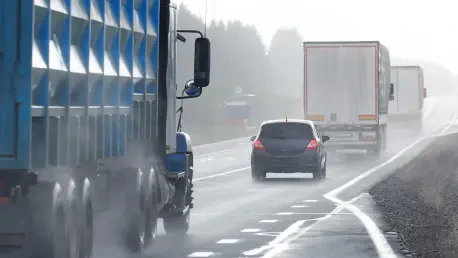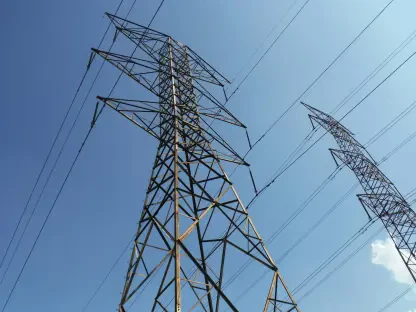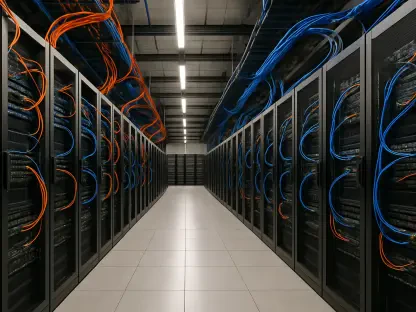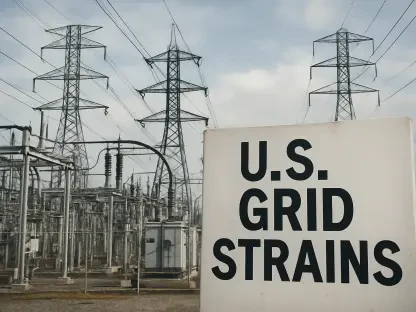With us today is Christopher Hailstone, a respected authority in energy management and renewable energy. In light of recent actions by Congress affecting California’s truck emissions rules, Christopher will share his insights on what these changes mean for the future of zero-emissions vehicles and the wider implications for environmental policy and the automotive industry.
Can you explain the significance of the Congressional Review Act resolutions and how they impact California’s truck emissions policies?
The Congressional Review Act resolutions are pivotal because they essentially strip away California’s ability to set its own strict emissions standards through EPA waivers. This means that the previously laid plans for ambitious zero-emissions goals are now uncertain, as the state cannot propose rules similar to those just revoked. These actions could slow down the aggressive timeline California had for reducing truck emissions.
How would you describe the Advanced Clean Trucks rule, and what were its key objectives?
The Advanced Clean Trucks rule was an innovative attempt to push the automotive industry towards cleaner technology by requiring that a significant percentage of trucks sold in California be zero-emissions vehicles by 2035. The key objective was to curb pollution and set a precedent that could influence nationwide standards for cleaner air, reflecting California’s enduring leadership role in environmental regulation.
What does the revocation of the Advanced Clean Trucks rule mean for the future of zero-emissions vehicles in states like California and others that had adopted similar policies?
Revoking the rule casts doubt on the future of zero-emissions vehicles across these states as it affects market planning and infrastructure investment in new technology. States that followed California’s lead will now have to reevaluate their strategies, potentially delaying progress and reducing the momentum hard won in the clean energy transition.
Why did Congress decide to roll back California’s emissions waivers, and what were the main arguments for and against this decision?
Congress’s decision to roll back these waivers stemmed from arguments that such regulations can inadvertently raise costs for consumers and limit truck choices. Opponents of the decision argue that it’s a step back in the fight against air pollution and undermines state autonomy in setting environmental standards tailored to their needs.
How will fleet owners in California and other states adapt to the changes brought by the revocation of these emissions waivers?
Fleet owners may find some relief as they gain more time to comply with zero-emissions targets. However, they’ll need to adjust their long-term planning, especially considering technology investments and operational costs, while balancing market demands that may still favor cleaner alternatives.
How do you think the revocation will impact consumer choice and costs in the trucking industry?
Initially, consumers might see a broader range of options as manufacturers are no longer bound to an aggressive timeline for zero-emissions vehicles. However, the long-term costs, both economic and environmental, could rise if innovation lags and fails to produce cost-effective clean vehicles that match consumer needs.
What kind of challenges or opportunities do truck manufacturers face as a result of Congress revoking these waivers?
Manufacturers face the challenge of recalibrating production efforts aligned with less stringent emissions targets. On the flip side, the rollback could also present an opportunity to diversify their portfolio, offering both zero-emissions and conventional vehicles while continuing to invest in clean technology development to stay competitive globally.
How are state agencies and truck manufacturers planning to continue their work on zero-emissions technology despite the rollback?
Despite the setback, state agencies and manufacturers appear committed to progressing towards zero-emissions technology. Many in the industry are doubling down on innovation, leveraging partnerships and federal and state initiatives to advance cleaner technologies without the regulatory pressure previously provided by California’s rules.
Can you describe the relationship between federal initiatives and innovation in developing zero-emissions vehicles?
Federal initiatives often serve as catalysts for innovation in the zero-emissions space by providing financial incentives, setting research agendas, and offering businesses a degree of predictability. This relationship can invigorate private-sector competition, driving advancements that benefit both the industry and the public by expanding environmentally-friendly vehicle options.
What was California’s Advanced Clean Fleets rule, and why did the state retract its waiver request for this rule?
The Advanced Clean Fleets rule aimed to impose stricter transition timelines on fleet owners than on manufacturers, targeting a faster switch to zero-emissions vehicles. The retraction of the waiver request likely reflects a strategic decision to regroup and reassess in light of shifting federal legislation and potential legal challenges.
How do the perspectives of EPA Administrator Lee Zeldin and California Air Resources Board Chair Liane Randolph differ on this matter?
EPA Administrator Lee Zeldin and Chair Liane Randolph starkly contrast in their views. Zeldin regards the revocation as a necessary correction to limit economic repercussions, while Randolph perceives it as an unconstitutional setback that threatens efforts to safeguard public health by limiting emissions and advancing technology.
In your opinion, what are the broader environmental implications of these Congressional decisions?
These developments could slow environmental progress by reducing pressure on manufacturers to innovate and meet stricter emissions standards. The lack of stringent regulations might delay the widespread adoption of zero-emissions technologies, potentially exacerbating air quality issues and climate change impacts in affected regions.
How might these legislative changes affect the timeline for transitioning to zero-emissions fleets?
The timeline for transitioning to zero-emissions fleets will likely extend, as states may no longer push for aggressive timelines. Without strict federal oversight or waivers, states may lose the leverage needed to enforce swift adoption, potentially stalling technological advancements needed to achieve these cleaner fleets promptly.
Can you tell us more about New Way Trucks’ approach to developing zero-emissions vehicles and how these changes might affect your plans?
New Way Trucks continues to pursue zero-emissions vehicle development, focusing on innovations like hydrogen fuel cells. Despite regulatory setbacks, they remain committed to ecological advancement, seeing federal and state initiatives as drivers of progress rather than obstacles.
How do you foresee the balance between innovation and regulatory requirements evolving in the refuse and trucking industry?
The balance is likely to become a more nuanced dance between pushing technological boundaries and navigating regulatory compliance. As industry leaders shape their paths forward, they must reconcile the economic realities and consumer expectations with their commitment to sustainable solutions.
What is your forecast for the trucking industry’s transition to zero-emissions vehicles in light of these changes?
The path might be rockier due to policy changes, but the transition is still inevitable. Market forces, international competition, and consumer demand will keep nudging the industry towards cleaner alternatives, though timelines and strategies may need to be recalibrated to adapt to this evolving landscape.









